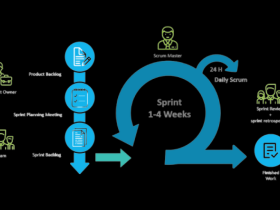Many banks use customer analytics to improve customer relationships. They are constantly looking for new ways to retain and engage their customers. Modern technology can solve this problem for banks. This post will discuss how customer analytics in the banking industry is helping all bank stakeholders.
What Is Customer Analytics in the Banking Industry?
Customer analytics is a process where you collect and analyze customer data. This process provides the banks with actionable insights into customer behaviors.
Banks serve different customers, so they need the knowledge of customer behavior to improve their marketing strategy. Also, fraud detection becomes easier for banks. After all, customer analytics solutions help the banks study their account holders.
Customer Analytics Is Reshaping the Banking Industry
Digital banking is no longer a theoretical concept. Technologies such as UPI (unified payment interface) from India enable faster transactions using mobile numbers. Social media is a valuable source of a customer’s spending habits and lifestyle needs.
Customer analytics in banking helps financial institutions make sense of customer data. Banks know a lot more from such data analytics services. The conventional KYC modules cannot surpass these modern solutions.
Also Read: How to Determine the Best ICO Development Services Provider
Old KYC (Know Your Customer) for Bank’s Customer Data Collection
Earlier, banks had to rely on their clients for their data. KYC, also known as knowing your customer, is one of the core banking operations. It collects customer data using preformatted forms.
Banks request more data on risky transactions. Also, customers highlight bank accounts for specific purposes. E.g., salary account, pension account, student account, etc.
Traditionally, customers would update their KYC details by visiting their branch offices. Often, this activity included changes in address or contact details.
Customer Analytics Solutions – a Modern Banking Necessity
KYC is not enough for banking and customer analytics. You can treat KYC as a mere record-keeping activity that helps resolve authorization conflicts. Of course, customer analytics in banking is altogether a different approach.
The bank must find new ways to incentivize the customers to share more data about themselves. Many times, banks can achieve this objective through social media analysis.
Electronically collected customer data has a greater scope than the outdated KYC system. As a result, the banking industry can leverage customer analytics solutions in banking operations.
Besides, many banks and NBFCs (non-banking financial companies) have emerged in the last few decades. Also, the competition has increased with innovative fintech (financial technology). You cannot retain your customers without relevant data analytics services.
Use Cases for Customer Analytics in Banking Industry
How can customer analytics solutions help banks improve their customer relations? Customers deserve a better banking service, and customer analytics tells the banks how to improve customer service.
Banks can combine customer data such as the birth date and gender using data analytics services. Then, they can use the generated insights to promote banking services suitable for respective account holders. E.g., vehicle loans for a 25-year-old working adult.
Personalization of marketing and sales campaigns is also possible when a bank conducts data analytics on customer data. E.g., you cannot enroll a low-income account holder into a high-risk fund.
Banks must be careful about the taxability and financial statement of their customers. Also, credit scores and spending habits reveal who will repay the loan and who will fail to do so. Customer analytics solutions streamline these operations.
In short, customer analytics in banking can improve risk management at banks.
Asset and auctioning valuation must rely on real consumer sentiments and prevailing market prices of land or other assets (such as gold). Banks need customer data analytics services to make the auctions successful and valuations precise.
Conclusion
You have learned the importance of customer analytics in the banking industry. It helps banks identify growth opportunities and financial risks.
This type of banking analytics improves operational efficiency and customer satisfaction rate. These benefits help banks build more profitable relationships with their customers.
Implementing these customer analytics solutions is a complex but rewarding business decision. Most banking institutions can succeed in this implementation with expert support.
A leader in customer analytics services, SG Analytics, enables banks and financial institutions to acquire, engage, and retain their customers. Contact us today if you seek a data-driven analytics firm for novel insights that unlock impressive banking growth.








Leave a Reply